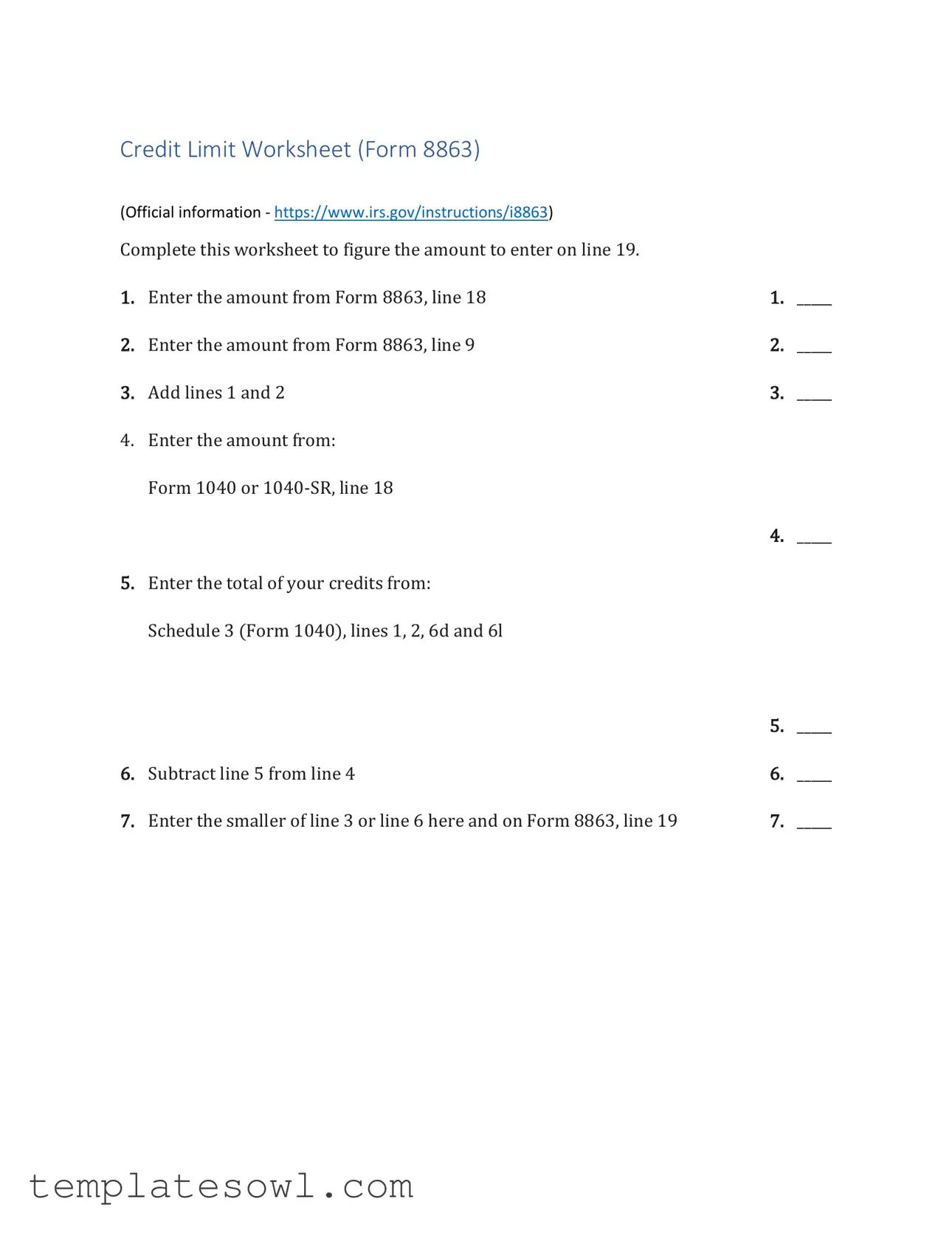What is Form 8863 Credit Limit Worksheet?
The Credit Limit Worksheet (Form 8863) is a tool used to determine the amount of credit available for education-related expenses. It specifically helps taxpayers calculate the educational credits they can claim on their tax return and ultimately how much they can enter on Form 8863, line 19.
Who needs to complete this worksheet?
If you have incurred qualified education expenses for a student during the 2022 academic period, you will need to complete this worksheet. This applies to each student individually, meaning if you have multiple students, a separate worksheet must be filled out for each one.
What information do I need before starting the worksheet?
Before beginning, gather your Form 8863 amounts, including lines 18 and 9. Additionally, you need your Form 1040 or 1040-SR line 18, and details from Schedule 3 (Form 1040) lines 1, 2, 6d, and 6l. It is also essential to know the total qualified education expenses paid in 2022, along with any adjustments for tax-free assistance or refunds received.
How do I calculate adjusted qualified education expenses?
To calculate adjusted qualified education expenses, start with the total amount paid for or on behalf of the student in 2022. Then make any necessary adjustments, which include tax-free educational assistance or refunds. Add up these adjustments and subtract this total from the initial qualified expenses. If the result is zero or less, enter -0-.
What should I do if I have tax-free educational assistance?
Tax-free educational assistance received in both 2022 and 2023, as well as any refunds related to qualified education expenses, must be considered when completing the worksheet. This information adjusts the total qualified education expenses down, ensuring the credits are correctly calculated.
How do I enter the final results on Form 8863?
Once calculations are complete, you will need to compare line 3 (the total from entries related to qualified expenses) and line 6 (the total credits from Schedule 3). The smaller number of the two becomes the amount entered on Form 8863, line 19. This step is crucial as it determines the eligible credit amount for your tax return.
Can I file multiple worksheets if I have more than one student?
Yes, a separate worksheet must be completed for each student for every academic period in which qualified education expenses were paid. Ensure that each worksheet is filled out accurately for each respective student to maximize potential credit claims.
What happens if my calculations lead to a negative amount?
If the adjusted qualified education expenses calculation leads to a negative amount, you should enter -0-. This indicates that there are no eligible expenses left to claim credits against.
Where can I find the official instructions for the Credit Limit Worksheet?
Official instructions for the Credit Limit Worksheet can be accessed on the IRS website at irs.gov/instructions/i8863. This site provides detailed guidance to help navigate the worksheet and understand requirements.
Are there any deadlines for completing this worksheet?
It is essential to complete the worksheet and incorporate the results into your tax return by the filing deadline. For most taxpayers, this means by April 15 of the following year. Late submissions could impact potential credits.
